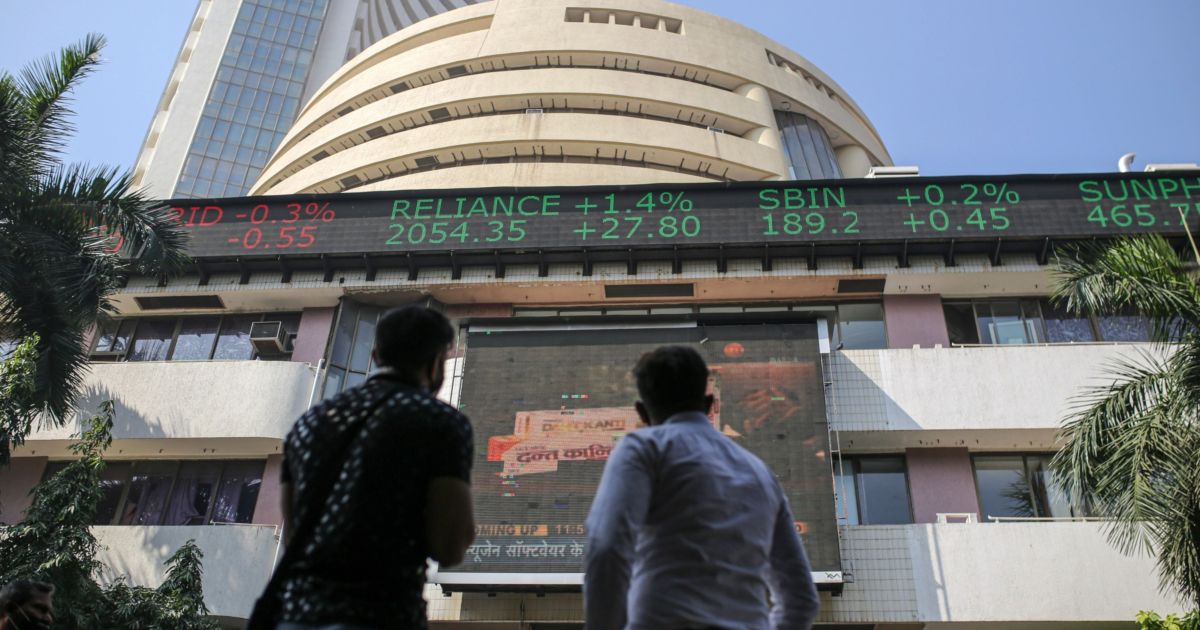[ad_1]
Wall Road’s most-talked-about recession indicator is sounding its loudest alarm in 20 years, intensifying considerations amongst traders that the U.S. economic system is heading towards a slowdown.
That indicator known as the yield curve, and it’s a method of exhibiting how rates of interest on varied U.S. authorities bonds evaluate, notably three-month payments, and two-year and 10-year Treasury notes.
Normally, bond traders count on to be paid extra for locking up their cash for a protracted stretch, so rates of interest on short-term bonds are decrease than these on longer-term ones. Plotted out on a chart, the assorted yields for bonds create an upward sloping line — the curve.
However each now and again, short-term charges rise above long-term ones. That destructive relationship contorts the curve into what’s known as an inversion, and indicators that the conventional scenario on the planet’s largest authorities bond market has been upended.
An inversion has preceded each U.S. recession for the previous half century, so it’s seen as a harbinger of financial doom. And it’s occurring now.
The yield curve has predictive energy that different markets don’t.
On Wednesday, the yield on two-year Treasury notes stood at 3.23 %, above the three.03 % yield on 10-year notes. A yr in the past, by comparability, two-year yields have been over one share level decrease than the 10-year yields.
The Fed’s mantra on inflation again then was that inflation could be transitory, which means that the central financial institution didn’t see a have to quickly elevate rates of interest. In consequence, shorter-dated Treasury yields remained low.
However over the previous 9 months, the Fed has develop into more and more involved that inflation isn’t going to fade by itself, and it has begun to sort out quickly rising costs by elevating rates of interest rapidly. By subsequent week, when the Fed is anticipated to boost charges once more, its coverage fee can have jumped about 2.5 share factors from close to zero in March, and that has pushed up yields on short-term Treasurys just like the two-year notice.
Buyers, alternatively, have develop into more and more fearful that the central financial institution will go too far, slowing the economic system to such an extent that it units off a extreme downturn. This fear is mirrored in falling longer-dated Treasury yields just like the 10-year, which inform us extra about traders’ expectations for development.
8 Indicators That the Economic system Is Shedding Steam
Worrying outlook. Amid persistently excessive inflation, rising client costs and declining spending, the American economic system is exhibiting clear indicators of slowing down, fueling considerations a few potential recession. Listed here are different eight measures signaling hassle forward:
Such nervousness can be mirrored in different markets: Shares in the USA have fallen near 17 % this yr, as traders have reassessed firms’ capacity to face up to a slowdown within the economic system; as the worth of copper, a world bellwether due to its use in an array client and industrial merchandise, has fallen over 25 %; and with the U.S. greenback, a haven in intervals of fear, at its strongest in 20 years.
What units the yield curve aside is its predictive energy, and the recession sign it’s sending proper now’s stronger than it has been since late 2000, when the bubble in know-how shares had begun to burst and a recession was only a few months away.
That recession hit in March 2001 and lasted about eight months. By the point it began, the yield curve was already again to regular as a result of policymakers had begun to decrease rates of interest to attempt to return the economic system to well being.
The yield curve additionally foretold the worldwide monetary disaster that started in December 2007, initially inverting in late 2005 and staying that method till mid-2007.
That monitor report is why traders throughout the monetary markets have taken discover now that the yield curve has inverted once more.
“The yield curve will not be the gospel, however I feel to disregard it’s at your personal peril,” stated Greg Peters, co-chief funding officer on the asset supervisor PGIM Mounted Revenue.
However which a part of the yield curve issues?
On Wall Road, essentially the most generally famous a part of the yield curve is the connection between two-year and 10-year yields, however some economists want to deal with the connection between the yield on three-month payments and 10-year notes as a substitute.
That group consists of one of many pioneers of analysis into the yield-curve’s predictive energy.
Campbell Harvey, an economics professor at Duke College, remembers being requested to develop a mannequin that would forecast U.S. development whereas he was a summer time intern on the now-defunct Canadian mining firm Falconbridge in 1982.
Mr. Harvey turned to the yield curve, however the USA was already roughly a yr into recession and he was quickly laid off due to the financial local weather.
It wasn’t till the mid-Nineteen Eighties, when he was a Ph.D. candidate on the College of Chicago, that he accomplished his analysis exhibiting that an inversion of the three-month and 10-year yields preceded recessions that started in 1969, 1973, 1980 and 1981.
Mr. Harvey stated he most well-liked to have a look at three-month yields as a result of they have been near present circumstances, whereas others have famous that they extra instantly seize traders’ expectations of instant adjustments in Fed coverage.
Perceive Inflation and How It Impacts You
For many market watchers, the alternative ways to measure the yield curve all broadly level in the identical route, signaling slowing financial development. They’re “completely different flavors,” stated Invoice O’Donnell, an rate of interest strategist at Citibank, “however they’re all nonetheless ice cream.”
Three-month yields stay under 10-year yields. So by this measure, the yield curve hasn’t inverted, however the hole between them has been shrinking quickly as considerations a few slowdown have escalated. By Wednesday, the distinction between the 2 yields had fallen from over two share factors in Could to round 0.5 share factors, the bottom it has been for the reason that pandemic-induced downturn in 2020.
The yield curve can’t inform us every thing.
Some analysts and traders argue that the eye on the yield curve as a preferred recession sign is overdone.
One widespread criticism is that the yield curve tells us little about when a recession will begin, solely that there in all probability shall be one. The common time to a recession after two-year yields have risen above 10-year yields is nineteen months, in response to information from Deutsche Financial institution. However the vary runs from six months to 4 years.
The economic system and monetary markets have additionally advanced for the reason that 2008 monetary disaster, when the mannequin was final in vogue. The Fed’s stability sheet has ballooned because it has repeatedly purchased Treasurys and mortgage bonds to assist assist monetary markets, and a few analysts argue that these purchases can distort the yield curve.
These are each factors that Mr. Harvey accepts. The yield curve is a straightforward option to forecast the trajectory for U.S. development and the potential for a recession. It has proved dependable, however it isn’t good.
He suggests utilizing it together with surveys of financial expectations amongst chief monetary officers, who sometimes pull again on company spending as they develop into extra nervous concerning the economic system.
He additionally pointed to company borrowing prices as an indicator of the chance that traders understand in lending to personal firms. These prices are inclined to rise because the economic system slows. Each of those measures inform the identical story proper now: Threat is rising, and expectations for a slowdown are mounting.
“If I used to be again in my summer time internship, would I simply have a look at the yield curve? No,” Mr. Harvey stated.
However that additionally doesn’t imply it has stopped being a useful indicator.
“It’s greater than useful. It’s fairly invaluable,” Mr. Harvey stated. “It’s incumbent upon any firm’s managers to take the yield curve as a destructive sign and have interaction in danger administration. And for individuals, too. Now will not be the time to max out your bank card on an costly vacation.”
[ad_2]
Source link















